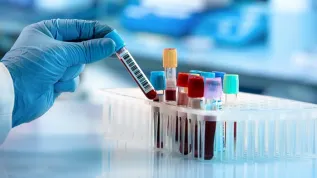
Boys are more exposed to Lyme disease transmitted by ticks, found scientists and doctors from Poznań who investigated the disease in children from Wielkopolska. The environment in which children live may influence the risk of contracting the disease, they report.
The study authors used records of Lyme disease cases in children hospitalised over a 10-year period (2012-2021) at the infectious diseases department of the Karol Jonscher Hospital, says their press release. The results of the analyses were published on the Research Gate website.
Pediatricians from the Poznań University of Medical Sciences and scientists from the Poznań University of Life Sciences explained the reasons for the different number of Lyme disease cases among children in the various counties of the Wielkopolska province. Their goal was also to identify the relationship between the occurrence of this tick-borne disease in children and various environmental factors. All this to develop effective prevention of Lyme disease, regardless of the place of residence.
The study authors point out that a continuous increase in disease incidence was observed in the analysed decade. During that time, almost 200 patients came to the hospital. Most of them came from Poznań and the Poznań county, but there were also patients from counties (e.g. Turek or Kępno) where no cases of Lyme disease had been previously recorded.
'We wondered what could be the cause of these differences and that was why we started cooperation with foresters experienced in researching the ecology of ticks', says Dr. Agnieszka Myszkowska-Torz, the first author of the study and a paediatrician from the Poznań University of Medical Sciences.
The researchers analysed the number of cases (per 100,000 children and per 100 square kilometres) in individual counties depending on the following factors: the density of deer animals (deer, roe deer, fallow deer, elk), the share of deciduous forests and the urbanization index (the percentage of urban residents in the total number of inhabitants of the county). These are unique data on a European scale.
'We saw a positive correlation between the number of children suffering from Lyme disease and all the studied factors. That is, the more deciduous forests in a given county, the more cases of Lyme disease. The larger the population of animals, the more often children suffer from Lyme disease. And finally, the more people living in cities in a given county, the more children contract the disease', says Dr. Anna Wierzbicka from the Poznań University of Life Sciences.
She adds that the analysis confirms that 'the more the forest is rich in species of trees and undergrowth plants', the better living conditions and more food (animal blood) ticks have. Therefore, in such areas, ticks are more numerous, which, in turn, increases the risk of Lyme disease infection.
Scientists have found that boys are more exposed to the disease. 'This may be due to cultural behaviour and their greater outdoor activity', say the scientists.
According to the authors, the research results suggest that the environment in which children live may significantly influence the risk of contracting the disease. Prevention should therefore be a priority for parents, both those from rural areas where contact with wild fauna is more frequent, and those living in cities.
Scientists and doctors emphasise that in areas with a large population of wild animals, special protection measures should be used to minimise the risk of contact with ticks. The problem should not be underestimated in cities either. Researchers stress the importance of educating parents to consciously protect their children against tick bites.
According to Dr. Myszkowska-Torz, it is crucial to regularly check children's skin for erythema migrans of Lyme disease (a red expanding patch of skin, usually lighter in the centre - ed. PAP), which is a characteristic symptom. It is equally important to use repellents, which may be chemical compounds, natural substances, devices that emit light or sound signals. Researchers also recommend wearing long clothes outdoors.
Over 25,000 cases of Lyme disease and 659 cases of tick-borne encephalitis were confirmed in Poland in 2023, according to the National Institute of Public Health - National Institute of Hygiene report devoted to infectious diseases. (PAP)
Anna Bugajska
abu/ zan/ kap/
tr. RL













